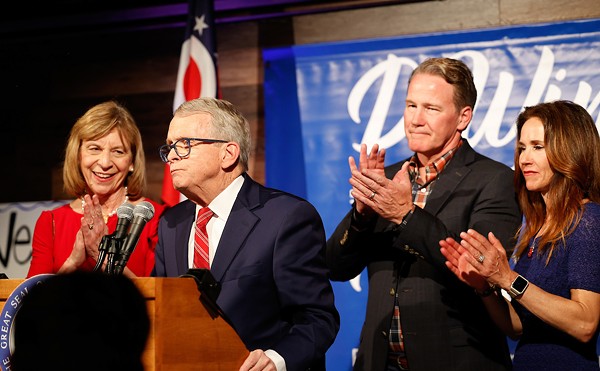The government of the United States is not trying to kill your grandmother. Or at least, if it is, no one saw fit to include that detail in the broad proposals for the reform of the American health-care system.
The public debate on health-care reform has been largely lost in a litany of concerns, real and imagined, ranging from death panels (not mentioned) to illegal immigrants (who are excluded from benefits) to the right to carry firearms near the president (which is, strictly speaking, only a health concern under certain circumstances). So if the word "Nazi" doesn't appear in any of the bills under consideration by Congress, what is in there that's causing so much fuss?
First, there are several proposals. The furthest along at this point is House Bill 3200, America's Affordable Health Choices Act of 2009, which has passed through the necessary committees and should come up for a vote when representatives return from summer vacation in September. The Senate version of the Affordable Health Choices Act, with some differences, still needs to pass through the Finance Committee before going up for a full vote, and any differences between the two will need to be hammered out.
The Congressional Budget Office, in a preliminary estimate of the costs of the reform plan, forecasts a spending increase of more than $1 trillion over the next 10 years, and the bills include sweeping changes to the health-care system. Putting aside the name-calling for a moment, here's a look at some of the major proposals in the House and Senate versions of the bill.
The Plan: Make health
insurance mandatory.
The Pitch: One of the starting points for the health care reform debate is the significant number of uninsured Americans — about 15 percent nationwide. This presents a problem not only for the individuals but for hospitals that are required to treat them, and to a greater extent, federal and state government programs that cover the lion's share of the treatment costs.
Health-care reform bills in the Senate and the House both require individuals to have coverage and employers to cover most of the costs. Failure to do so in each case would result in a tax penalty, although subsidies would be provided for low- and middle-income families, and small businesses would be exempt.
The Problem: Some opponents say that in mandating healthcare, the government is overstepping its bounds and imposing on individual liberties. But most of the debate centers on the idea of government requiring people to purchase a product from a private company with a profit motive — one that they either may not be able to afford or that doesn't meet their needs. These people say that any individual mandate must be coupled with an affordable public option so that it doesn't function primarily as a cash cow for private insurance companies.
The Plan: Offer a publicly run health insurance option.
The Pitch: The health-care market currently operates as a near monopoly, with the majority of services in a given market offered by a single company. Proponents of a public option for health care say that it could be run more cheaply by eliminating some of the administrative costs and profit margins of private insurers, and that it would finance itself through premiums. A large public plan would be able to bargain more effectively with hospitals and doctors to secure lower payments, along the lines of Medicare, and possibly exert pressure on private insurance companies to lower their rates in order to compete.
The Problem: This is the big one, driving much of the public debate. Opponents argue that a public insurance option would have an unfair competitive advantage over private companies, eventually forcing them out of business and leading to a system that is entirely government-run. There are also questions about whether a public plan could be run efficiently over the long term and whether costs could be covered entirely by premiums.
The Plan: Change private
insurance regulations.
The Pitch: Sets new standards for private insurance companies, including the percentage of money spent on medical services (as opposed to administrative and other costs). The House bill would require private insurers to meet a certain goal or refund any extra; the Senate's version would require companies to report that so-called "Medical Loss Ratio." Both bills would prohibit insurance companies from denying coverage or substantially increasing premiums based on pre-existing medical conditions.
Most states currently offer insurance to people who have been denied private coverage, but those plans are generally more costly than current private insurance rates precisely because they cover only higher-risk patients. Private plans would have to meet standards set for a minimum mandatory coverage, and limits on insurance spending over the course of the patient's life would be eliminated.
The Problem: In the case of pre-existing conditions, critics argue that adding more high-risk patients into the mix would raise insurance premiums for everyone. It also represents government interference in a private business, by regulating the profit margins of insurance companies.
The Plan: Expand and reform existing federal programs.
The Pitch: Both Senate and House bills would significantly expand the number of non-elderly individuals eligible for Medicaid, and the House version would allow some Medicaid recipients to enroll in the new health-care exchange. Future increases in Medicare spending would be scaled back, but payments to providers would increase. Medicaid payments to providers would also be increased, although inefficiencies in the system would be addressed that, according to the Congressional Budget Office, could result in an overall reduction of federal money spent.
The Problem: Critics doubt that reforms, coupled with upping enrollment, will result in a net savings. Concerns also linger about Medicare benefits being cut, but the plans under consideration make no such suggestion.
The Plan: Use the elderly as a cheap and renewable source of food.
Just kidding.













